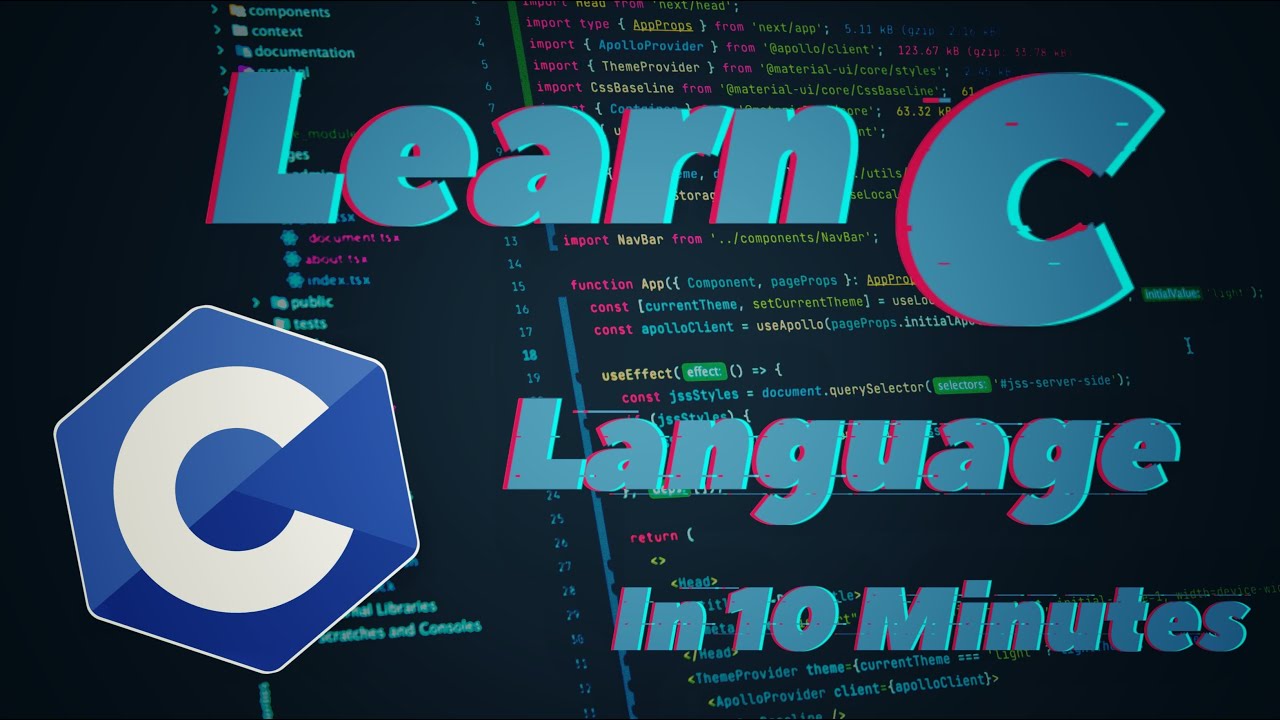Learn C++ in 10 Minutes !! C++ Tutorial for Beginners
Summary
TLDRThis video introduces C++ programming in a concise 10-minute tutorial, covering essential concepts such as the history of C++, basic syntax, variables, functions, loops, and conditional statements. It explains key features like the use of `std::cout`, the `cin` object for input, and demonstrates how to create and call functions. The video also highlights the use of comments and discusses how to compile and run C++ programs. Perfect for beginners, this tutorial offers clear, hands-on examples to quickly grasp C++ programming fundamentals.
Takeaways
- 😀 C++ is an extension of C that adds support for object-oriented programming, allowing code organization into reusable units called classes.
- 😀 The first step in a C++ program is including necessary libraries using the '#include' directive, such as '#include <iostream>' to access output functionalities.
- 😀 Every C++ program must have a 'main' function, which serves as the starting point of execution.
- 😀 The 'cout' object from the 'std' namespace is used for printing to the terminal, and the insertion operator '<<' is used to send data to 'cout'.
- 😀 C++ supports the concept of namespaces to avoid naming conflicts. The 'std::' prefix is used to access objects like 'cout' from the standard namespace.
- 😀 Variables in C++ are declared with a data type followed by the variable name, and can be initialized at the time of declaration using the assignment operator.
- 😀 Input is handled with the 'cin' object, using the extraction operator '>>' to read data from the user and store it in variables.
- 😀 C++ has three types of loops: 'while', 'do-while', and 'for', each offering different control mechanisms for repeating code.
- 😀 Conditional statements in C++ include 'if', 'else if', and 'else' to execute specific blocks of code based on certain conditions.
- 😀 Functions in C++ are declared with a return type, function name, and parameters, and can be used to encapsulate reusable blocks of code.
Q & A
What is the main limitation of C language that C++ aimed to solve?
-C language lacked support for object-oriented programming (OOP), which is a key feature that C++ aimed to incorporate.
What was the original name of C++ and why was it called that?
-C++ was originally called 'C with Classes' because it extended the C language by adding object-oriented features like classes.
What is the purpose of the '#include <iostream>' statement in C++?
-#include <iostream> tells the compiler to include the code from the iostream header file, which provides essential input and output functionality such as 'cout'.
How does the '<<' operator work in C++?
-In C++, the '<<' operator is called the insertion operator. It is used to send data to the 'cout' object to be printed on the terminal. It can also be used to format data before output.
What is the significance of the scope resolution operator '::' in C++?
-The scope resolution operator '::' is used to specify which 'cout' object to use when there are multiple definitions, particularly when there are libraries that might include their own 'cout'. It helps to reference the correct object, such as 'std::cout' from the 'std' namespace.
What is a namespace in C++ and why is it important?
-A namespace in C++ is a way to group related code together, avoiding naming conflicts. It ensures that names like variables, functions, and classes are uniquely identified, such as the 'std' namespace for standard library objects.
What is the role of the 'using namespace std;' statement?
-'using namespace std;' allows you to directly use names from the 'std' namespace, like 'cout' and 'endl', without explicitly qualifying them as 'std::cout' or 'std::endl'.
How can you take input from the user in C++?
-In C++, input from the user can be taken using the 'cin' object. You use the extraction operator '>>' to extract data from the user and store it in a variable.
What are the three types of loops in C++?
-C++ has three main types of loops: the 'while' loop, which checks the condition before each iteration; the 'do-while' loop, which executes the block of code at least once before checking the condition; and the 'for' loop, which gives more control over initialization, condition, and iteration.
How does the 'if', 'else', and 'switch' statements work in C++?
-The 'if' statement executes code when a condition is true, 'else' runs code when the condition is false, and 'switch' allows choosing between multiple options based on the value of a variable. 'switch' can have multiple cases, and a default case for unmatched values.
Outlines

This section is available to paid users only. Please upgrade to access this part.
Upgrade NowMindmap

This section is available to paid users only. Please upgrade to access this part.
Upgrade NowKeywords

This section is available to paid users only. Please upgrade to access this part.
Upgrade NowHighlights

This section is available to paid users only. Please upgrade to access this part.
Upgrade NowTranscripts

This section is available to paid users only. Please upgrade to access this part.
Upgrade Now5.0 / 5 (0 votes)





